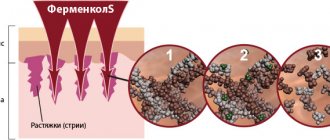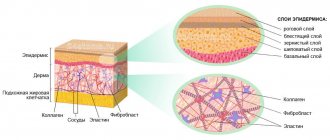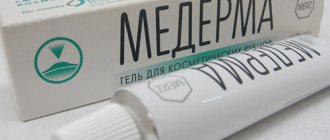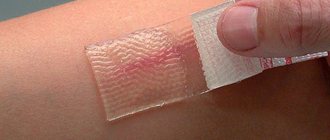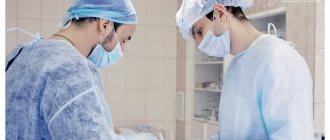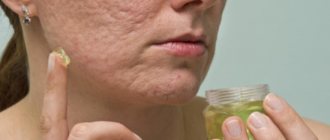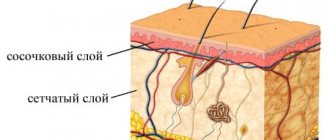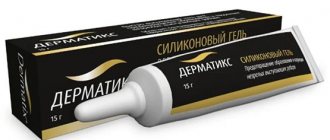| "Before and after" | Prices | Treatment | Doctors | Sign up |
A scar or scar is a dense connective tissue that develops during the healing process of deep damage to the skin or mucous membrane after mechanical, thermal or chemical influences, as well as due to inflammation or after surgery.
Scar formation is the body's natural response to injury due to a universal healing mechanism. With a favorable course of the wound process, normotrophic scars are usually formed. Such scars become almost invisible over time, they do not change the surface texture of the skin, their color is slightly lighter, but close to normal skin, and they are moderately elastic.
Where are the scars from?
At ART Clinic we treat various scars. Plastic surgeries, as a source of their formation, have long been relegated to last place. Today, plastic surgery is most often done using minimally invasive methods. That is, the surgeon’s intervention in the body is minimal: it is enough to make a tiny, just a few centimeter incision. Sometimes a puncture is enough and you don’t even need stitches.
Most of the ART Clinic patients come with scars caused by injuries or emergency operations. When it comes to saving a person’s life: stopping bleeding, connecting torn tissues, surgeons often think about aesthetics as the last thing. In women, one of the most common reasons why scars form is a caesarean section.
Laser removal
Modern cosmetology allows using a laser to eliminate any mole without a trace on the surface of the skin. The practical benefit of the laser is that under its influence the visible area of the mole is destroyed , leaving virtually no marks on the skin. High-precision treatment of nevus does not affect the surrounding skin. As a result, the duration of the recovery course is reduced. If we talk about other advantages of the mentioned technology, they look like this:
pros
- jeweler precision of the beam;
- short duration of the operation;
- rapid regeneration of damaged skin areas;
- no bleeding;
- the patient does not need special care after completion of the procedure;
- no restrictions throughout the rehabilitation course.
Minuses
- It is impossible to obtain material for further histological examination in order to identify oncological processes, which endangers the patient’s life.
- Possible allergic reactions to ultraviolet radiation.
- If the patient suffers from other skin diseases such as herpes, dermatitis, etc., drug treatment is necessary after the procedure.
- If the tumor is large, it is impossible to remove it completely in one session.
Advantages of scar removal at ART-Clinic
Online consultations for patients from the regions
A team of highly qualified specialists with extensive experience
Modern minimally invasive techniques of operations and reconstructions
Affordable prices, promotions, discounts, installments
Scars have long ceased to be something untreatable. Although there is still a strong popular opinion: if they are there, there is no escape: you have to hide them under clothes, cosmetics, and so on. At ART-Clinic we have been successfully relieving patients of scars for more than 15 years and during this time we have accumulated enormous positive experience.
Sign up for a free consultation at the ART Clinic by calling +7 495 150 23 32 and 8 800 500 42 32 (calls within Russia are free) or using a special form
Predicted result
Surgical correction of scar defects on the skin is a fairly effective method for eliminating complex formations.
With the help of plastic surgery, it is possible to get rid of scars that cosmetology cannot cope with. These are atrophic scars, which form mainly after skin diseases such as acne, or hypertrophic scars, which are a product of excessive collagen production. Plastic surgery also allows you to cope with one of the most difficult types of scar formations to correct - keloids. Plastic surgery is an effective way to eliminate the consequences not only of traces of surgical intervention, but also of various injuries, including severe ones. Traces of a burn, gunshot wound or other accidents, or simply a congenital tendency to form keloid scars can cause a lot of anxiety or even physical discomfort. Plastic surgery allows you to restore psychological and physical comfort, restore lost aesthetics and improve the quality of life.
Correcting aesthetic deficiencies has a positive effect on all areas of life. Increasing self-confidence and attractiveness leads to the establishment of social relationships, a successful fight against complexes against the background of low self-esteem and the acquisition of internal harmony. Therefore, surgery helps to get rid of not only external defects, but also other, deeper problems that were caused by them.
The quality of the result depends not only on the skill of the surgeon, but also on the responsibility of the patient. To achieve the best aesthetics, it is necessary to follow the rules of rehabilitation, in particular, protect the operated area from ultraviolet radiation and traumatic influences.
Types of scars
- Normotrophic – at the same level as the skin surface
- Hypertrophic – dense, protruding above the surface of the skin
- Atrophic – located below the skin level, for example, post-acne scars (after acne), stretch marks (stretch marks)
- Keloids - their feature is uncontrolled growth, often their size significantly exceeds the original area of skin damage. Excision of a keloid does not lead to its removal, but only aggravates the problem - the area of scar deformation increases. Some keloid scars cause pain, itching, and burning.
Laser resurfacing of scars and scars
Laser treatment of scars (resurfacing) is most often used to treat hypo-, normo- and hypertrophic facial scars. An ablative laser (CO2, erbium) creates an “ideal wound” with smooth edges and a smooth surface, creating favorable conditions for healing. The skin at the site of grinding is leveled, and a skin structure close to natural is recreated. Depending on the number (single or multiple scars), as well as their severity, total or fractional resurfacing can be used.
Learn more about scar removal
At ART-Clinic we begin laser resurfacing of regular (normotrophic) scars literally two weeks after surgery. Over many years of work, our specialists have come to an important scientific conclusion: the earlier the procedure is started, the better. The roughest scars do not yet have time to form during this time, so they are more susceptible to action. In short, the older the scar, the more difficult and longer it takes to treat.
As a rule, resurfacing is done without anesthesia. During the procedure, which lasts a few seconds, a stream of cold air is used to reduce discomfort. However, it all depends on the area of the scar, its location and the wishes of the patient. For example, areolas are anatomically more sensitive than the bikini line.
On average, three procedures are needed to treat a medical scar, and five for a traumatic one. Rehabilitation takes 2-3 days until the minor burn after laser exposure goes away. This does not affect the general condition of the body at all.
Another method that helps get rid of very rough scars is surgery. First, they are excised, then a new and aesthetic medical suture is applied, which can then be polished with a laser, making it less noticeable.
Finally, if the patient is embarrassed by even a thin white stripe of a scar, an ART-Clinic permanent makeup specialist can camouflage it to match the color of the skin.
A special situation with keloid scars. Laser resurfacing and surgical removal cannot be used on them - they can become larger.
We treat keloids with special medications. A course of several injections into the scar can transform a keloid scar into a regular one. It looks like a thin whitish stripe. Then you can start laser resurfacing. This is the most effective method. However, we immediately warn patients: even a cured keloid is unpredictable.
See the results before and after
Go to gallery
Operation stages
- Surgeon consultation
- Analyzes and examinations
- Preparing for surgery
- Operation
- Rehabilitation
Surgeon consultation
At the first consultation, the surgeon examines the patient. Then, together with the patient, the desired result is discussed and the optimal plastic surgery technique is selected. The doctor calculates the price for scar excision and issues a list of mandatory tests and examinations.
Analyzes and examinations
As part of preoperative diagnostics, the patient is required to undergo general tests, biochemistry, infectious markers, determine blood type and Rh factor.
It is also necessary to obtain a fluorogram, ECG, and coagulogram. Based on the results, the possibility of surgery is determined. The first phase of the preparatory stage is determining the absence or presence of contraindications. To do this, the patient must undergo a mandatory examination. A list of diagnostic measures and laboratory tests will be provided by the plastic surgeon at the first consultation. The price for scar excision does not include preparation - tests are taken and paid separately in a clinic convenient for the patient. The standard list includes:
– general tests, – biochemistry, – coagulogram, – infectious markers, – determination of blood group and Rh factor, – fluorography, – electrocardiography.
Some patients, if necessary, are additionally prescribed consultations with specialized specialists, for example, a cardiologist. Based on the results of the examination, the patient must receive a physician’s opinion on the absence or presence of contraindications and, as a consequence, on the possibility or impossibility of performing the operation. If examinations show the absence of contraindications, the patient and plastic surgeon select a suitable date for plastic surgery. It is important to remember that surgical excision of a scar cannot be performed earlier than a year after the appearance of scars, since it is during this period that the formation of fibrous tissue ends. If you make a correction at the formation stage, the result may seriously differ from the desired one.
Then you need to consult with an anesthesiologist, who selects the appropriate type and dosage of anesthesia based on the patient's health condition. After this, preparation becomes entirely the responsibility of the patient himself.
Preparing for surgery
If there are no contraindications, a planned correction date is set.
You should stop taking anticoagulants (aspirin, heparin) and hormonal drugs 2-3 weeks before. It is also highly recommended to give up cigarettes and alcohol. Before surgery, consultation with an anesthesiologist is necessary. For 2-3 weeks, you need to stop taking any blood thinning drugs, such as aspirin or heparin, as well as hormonal drugs. Quitting smoking and alcohol is strongly recommended. If the operation is performed under general anesthesia, you should not eat food 8 hours before surgery.
Operation
The correction is made according to a pre-planned method.
The surgeon excises the scar, and in case of extensive damage, applies a skin flap from the donor area and fixes it with sutures. Plastic surgery takes place mainly under local anesthesia. The duration takes no more than an hour. In most cases, surgical excision of scars takes place under local anesthesia. As a rule, this is quite sufficient, since the correction is simple and low-traumatic. In rare cases, it is possible to use general anesthesia - mainly for large volumes of work and high complexity of plastic surgery.
Initially, the surgeon performs excision of the scar using one of the techniques - tangential, spindle-shaped or step-by-step. The choice of technique is carried out in advance, based on the characteristics of the corrected area - size, density, location of fibrous tissue, etc. Then the edges of the wound are carefully aligned and the wound is sutured. At the end of the correction, the surgeon sutures the thinnest threads. seams.
To correct extensive scar defects, including after burn injuries, free or non-free skin grafting is used using a skin flap from the donor area. With free plastic surgery, the flap is completely cut off from the area; with non-free plastic surgery, it is partially cut off. When working using this technique, the surgeon cuts off a surface layer of skin no more than 0.8 mm thick from the donor area using a special instrument. The flap is then perforated to increase the area, applied to the corrected area and fixed with separate
The duration of the operation depends on the volume and complexity of the work and usually does not exceed 1 hour. After suturing the operated area, the patient can go to the hospital room under the supervision of medical personnel. You must remain under observation for several hours. If there are no complications or complaints about the condition, the patient can leave the clinic and go home for further recovery and rehabilitation.
Rehabilitation
The recovery period after scar plastic surgery is no more than 5 days. The patient must follow all recommendations of his surgeon. The operated area should be protected from exposure to ultraviolet radiation and injury. Additional appointments are possible if necessary.
Scar removal prices
Postoperative scar correction using the Candela CO2RE device
| Scar correction | from 2,500₽ |
| Scars after blepharoplasty of the upper eyelids (up to 5 sq.cm.) | 5 000₽ |
| Scars after blepharoplasty of the lower eyelids (up to 5 sq.cm.) | 5 000₽ |
| Scars after T-shaped breast lift (up to 25 sq.cm.) | 15 000₽ |
| Scars after breast augmentation (up to 10 sq.cm.) | 10 000₽ |
| Scars after abdominoplasty (up to 10 sq.cm.) | 10 000₽ |
| Scars after abdominoplasty + stretch marks (up to 100 sq. cm.) | 20 000₽ |
| Scars after SMAS lifting (up to 10 sq. cm.) | 10 000₽ |
Postoperative scar correction using the MOSAIC HP device
| Correction of postoperative scar (DEEP mode) | from 2,000₽ |
| Scars after blepharoplasty of the upper eyelids (up to 5 sq.cm.) | 4 000₽ |
| Scars after blepharoplasty of the lower eyelids (up to 5 sq.cm.) | 4 000₽ |
| Scars after T-shaped breast lift (up to 25 sq.cm.) | 8 000₽ |
| Scars after breast augmentation (up to 10 sq.cm.) | 6 000₽ |
| Scars after abdominoplasty (up to 10 sq.cm.) | 6 000₽ |
| Scars after abdominoplasty + stretch marks (up to 100 sq. cm.) | 12 000₽ |
| Scars after SMAS lifting (up to 10 sq. cm.) | 6 000₽ |
All prices
